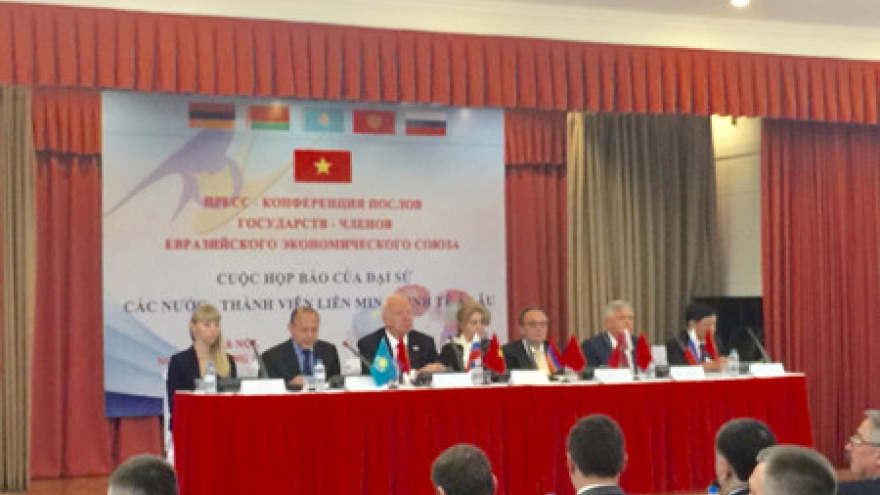Grasping opportunities from Vietnam-EAEU trade agreement
VOV.VN - The free trade agreement between Vietnam and the Eurasian Economic Union (EAEU) officially took effect on October 5, 2016. Vietnam has been ready to grasp opportunities and handle challenges when the agreement comes into force.
 |
The agreement specifies the duties of both sides in liberalizing trade, services, investment, and personal travel. Both sides have committed to open their markets to 9,927 tariff lines. Some of Vietnam’s staples will enjoy preferential tariffs.
Opportunities for Vietnam’s exports
With tax reductions for nearly 90% of all tariff lines and 0% tax for 59.3% of all commodities when the agreement takes effect, Vietnamese businesses will gain a great advantage in competing with other countries. In the garments and textiles sector, 82% of the tariff lines will be reduced and 36% eliminated altogether when the agreement takes effect. This should increase revenue from US$700 million to US$1 billion in the next 1 or 2 years. Vietnam will advance from 8th place to 4th in the garments and textiles field. Reductions or elimination will apply to 77% of tariff lines for footwear and 95% of tariff lines for seafood in the next 10 years.
Bui Huy Son, Director of the Trade Promotion Department of the Ministry of Industry and Trade, says “We’ll enjoy great advantages because we won’t have to compete with our partners. The EAEU has 5 countries with a total population of 182 million people and a combined economy with US$2.2 trillion. It’s a lucrative market for us.
We have opportunities to attract investment and technology, particularly for mechanical manufacturing, chemicals, and energy. The trade agreement with the EAEU and other free trade agreements will create a closed circle for us to take full advantage of our partnerships during our global integration.”
Dang Hoang Hai, Director of the Department of the European Market, says "Vietnam is the first country to sign a trade agreement with the EAEU. It will create great opportunities for Vietnamese exporters and increase bilateral trade turnover from US$4 billion to US$8 or 10 billion".
Businesses actively take advantage
Of 940 Vietnamese exporters to the EAEU, about 200 account for 90% of the total export value. They are mainly working in fisheries, coffee, rubber, tea, rice, cashews, pepper, garments and textiles, wood, and confectionaries.
Vietnamese businesses have begun negotiations to seize opportunities from the trade agreement. Dinh Tuan Anh, Director of the Ladoza Company, says: “Our company imports raw materials from India and equipment from other countries at zero percent tax. We have been negotiating with foreign partners like Mexico to export bags and backpacks. We have designed 20 new products to export in 2017.”
Opportunities aside, Vietnamese businesses will have to improve their compliance with international law to compete with imported products. Nguyen Khanh Ngoc, Deputy Director of the Department of the European Market, advises businesses to carefully study regulations on tax and product origin and arrange logistic services to reduce costs.




